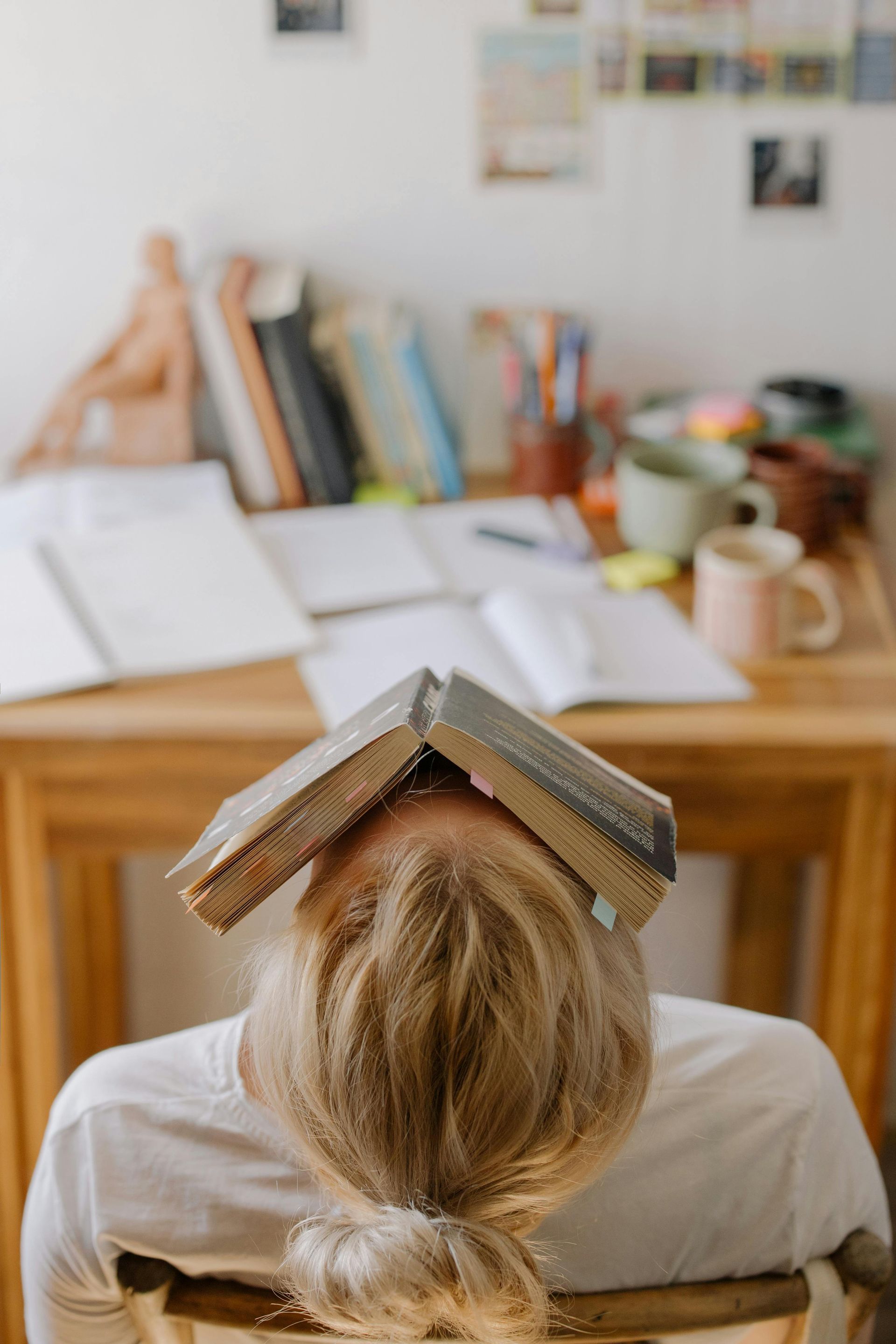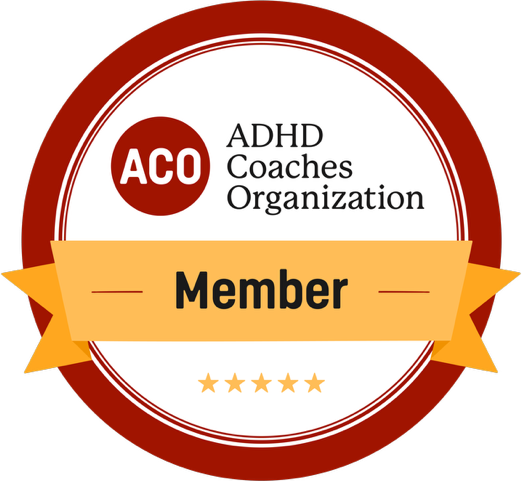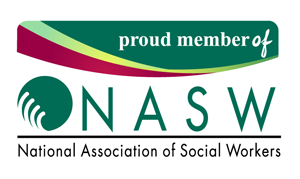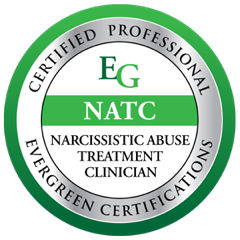It Can Happen to Anyone: Why Smart, Capable People Can Still Get Pulled into Narcissistic Relationships
We like to believe we’d see it coming. That if someone were manipulative, controlling, or emotionally unsafe, we’d spot the signs early and walk away. But the truth is: narcissistic relationships often begin in ways that feel exciting, affirming, with what feels like emotional attunement.
Many of the people who get pulled in are not naive or weak—They’re thoughtful, intelligent, and emotionally attuned.
And that’s not a red flag you missed. That’s how these relationships are designed to work. So if you’ve found yourself in a confusing, painful dynamic—especially one that’s hard to explain to others—this post is for you.
It Can Happen to Anyone
One of the most common refrains I hear from clients is: “But it didn’t start this way.”
Narcissistic dynamics are confusing by nature.. In the beginning, they’re often full of intensity—big declarations, constant contact, the feeling of being deeply seen and understood. It can feel like a connection unlike any other. That early rush of attention and admiration is often called love bombing, and it creates a strong emotional bond quickly. For someone who’s craving connection, who’s been lonely, or who grew up with inconsistency, it can feel like finally being chosen.
But as the relationship progresses, things start to shift—subtly at first. You might feel confused, second-guess yourself more often, or find yourself explaining your feelings more than expressing them. You may even start to feel like the problem in the relationship is... you.
Being pulled into a narcissistic dynamic isn’t a reflection of your intelligence, strength, or character. In fact, it often says the opposite.
You might be someone who:
- Deeply believes in the goodness of people
- Wants to be fair and understanding
- Has strong values around commitment and compassion
- Tends to give people the benefit of the doubt
- Is wired to reflect first and react later
These are beautiful traits. But they can be used against you by someone who knows how to exploit them.
Once trust is established, the dynamic begins to shift—subtly at first. You may start to feel like you’re walking on eggshells. You might begin second-guessing yourself more. You might find yourself over-explaining, apologizing, or trying to avoid upsetting them. You might even find yourself slowly losing touch with your own instincts.
None of that means you were foolish or weak. It means you were human—and someone used your humanity against you.
Why Smart, Empathic People Can Be Especially Vulnerable
This part is important to understand: people who stay in narcissistic dynamics are often not people who don’t know better. They’re people who hope better.
If you’re naturally reflective, generous, and emotionally aware, you may:
- Want to understand why someone behaves the way they do
- Believe that insight and compassion can heal a relationship
- Take responsibility for maintaining harmony, even at a cost to yourself
- See someone’s pain and believe you can be the person who finally helps them feel safe
This desire to fix, understand, and hold space is part of what keeps people in these dynamics—especially when the other person is skilled at framing themselves as the misunderstood victim.
It’s not just that you missed the red flags. It’s that someone exploited your empathy and hopefulness while subtly distorting your sense of self.
The shame trap: “How did I let it happen?”
Many people carry deep shame about staying in these relationships. They wonder: Why didn’t I leave sooner? How did I not see it? What does this say about me?
But here’s the thing: manipulation works by creating confusion. By making you doubt your instincts. By slowly chipping away at your reality until you don’t trust yourself anymore. One of the trickiest things about narcissistic dynamics is that harm is often reframed as pain.
You might think:
- “They’re just insecure.”
- “They don’t know how to communicate.”
- “They’ve been through so much—I don’t want to give up on them.”
When you believe someone is hurting—not harming—it becomes harder to set boundaries. You start managing their emotions instead of your own. You rationalize the patterns and try harder to soothe the situation instead of assessing the relationship.
You didn’t let it happen. It happened slowly, strategically, and under the radar. That’s not weakness; that’s being human.
If any of this feels familiar, know this: you’re not broken, foolish, or weak. You’re someone who deserves to feel safe, seen, and steady in your relationships—and that starts with understanding the dynamics you’re in.
In the next post in this series, I’ll walk you through a visual guide of what a healthy relationship looks like—so you can start spotting the difference between intensity and intimacy, control and care, and connection and confusion.
Because clarity doesn’t just help you leave what harms—it helps you move toward what heals.
Not Everyone Can—or Should—Leave Immediately
Sometimes, leaving isn’t an option—at least not right away. You may be sharing children, financially dependent, or aware that leaving could escalate the situation.
And that’s okay. Staying in a difficult relationship doesn’t mean you’re weak or enabling. It means you’re navigating complexity—and you deserve support, tools, and strategies to keep yourself emotionally steady while you do.
There are ways to create emotional boundaries, build inner resilience, and protect your sense of self even if you choose (or need) to stay for now.
What Helps Isn’t Just Strength—It’s Clarity
When people start to heal, they often look back and realize they’d been minimizing red flags or explaining them away. Not because they were blind, but because they were hopeful.
What ultimately helps people break free isn’t just willpower. It’s discernment.
- Remembering what it feels like to feel safe and emotionally steady.
- Getting curious about your own patterns without shame.
- Understanding what healthy relationships actually look and feel like
- Recognizing patterns of manipulation, even when they’re subtle
- Getting clear on what you value—and what it costs to constantly override those values
- Learning to spot the difference between conflict and control, between love and loyalty to chaos
The goal isn’t just to decide whether or not to leave a relationship—it’s to come home to yourself.
What’s Next?
Want support?
If you're noticing that emotional overload, confusion, or relational stress feels constant, you're not alone. Whether through therapy or coaching, I help clients reconnect with themselves, learn to regulate, and move forward with more clarity and self-trust.
Explore my
free resources or
connect and explore therapy and coaching options. You don’t have to figure it out alone.

















